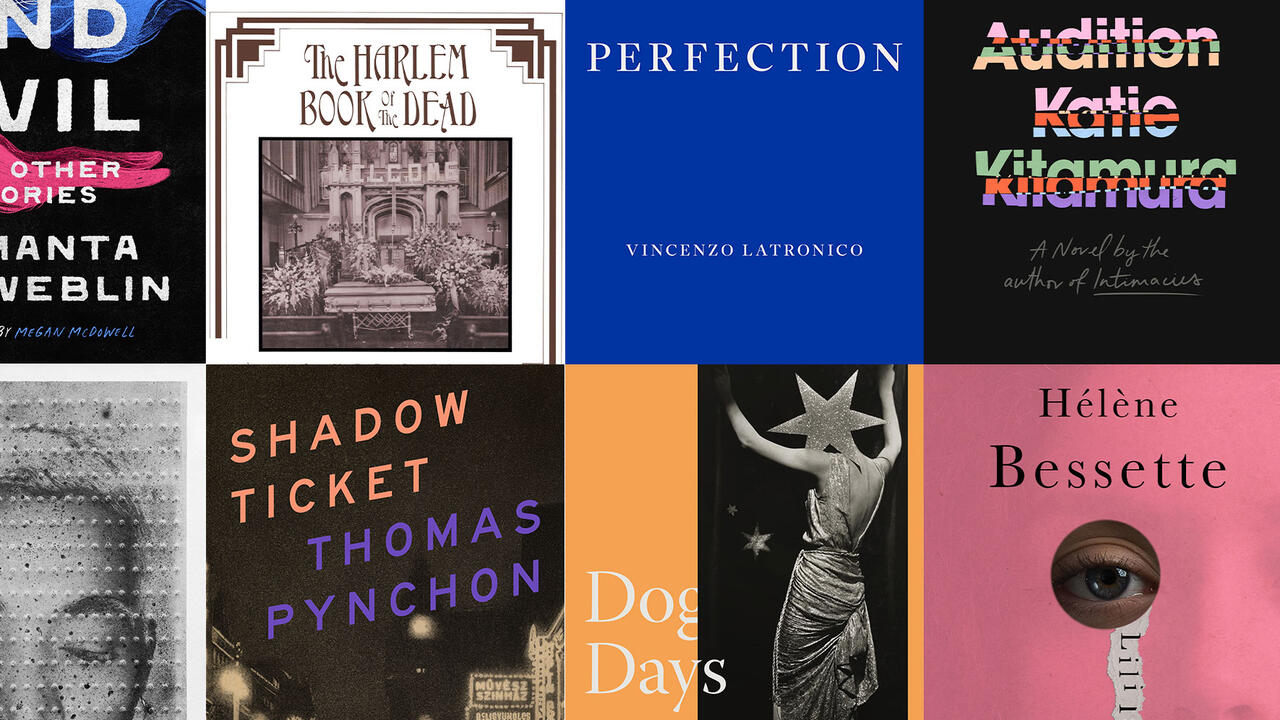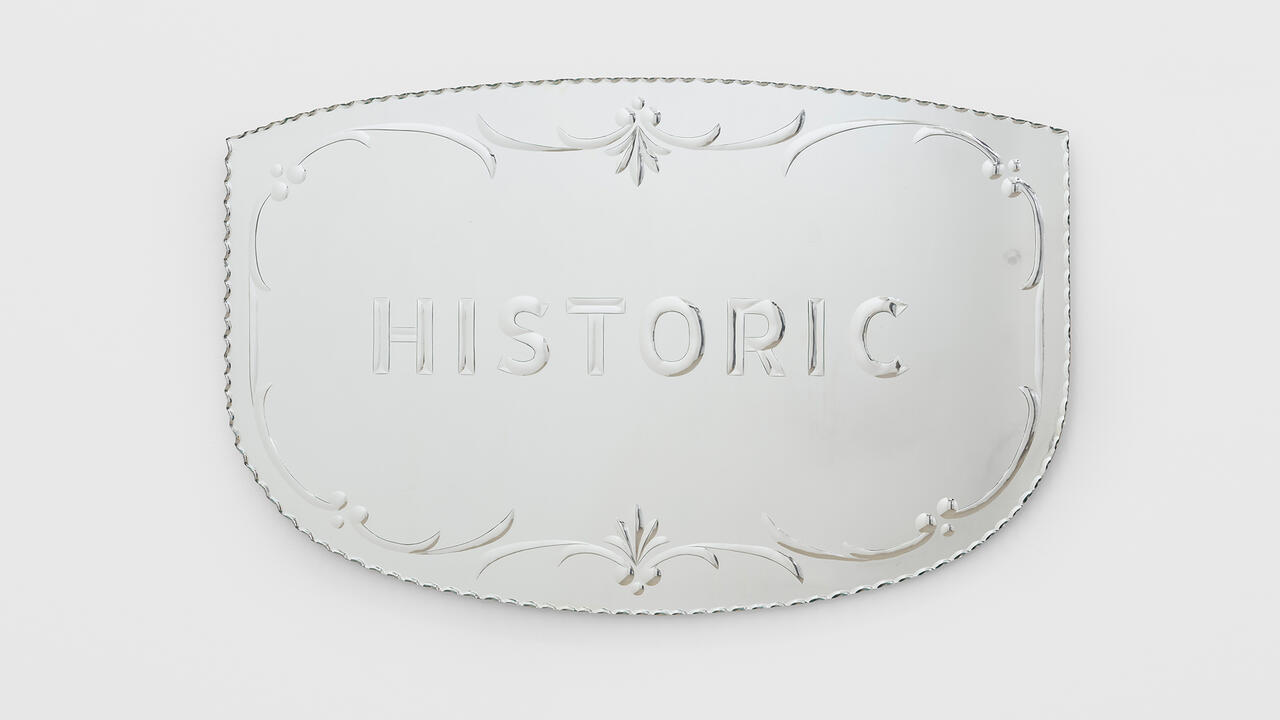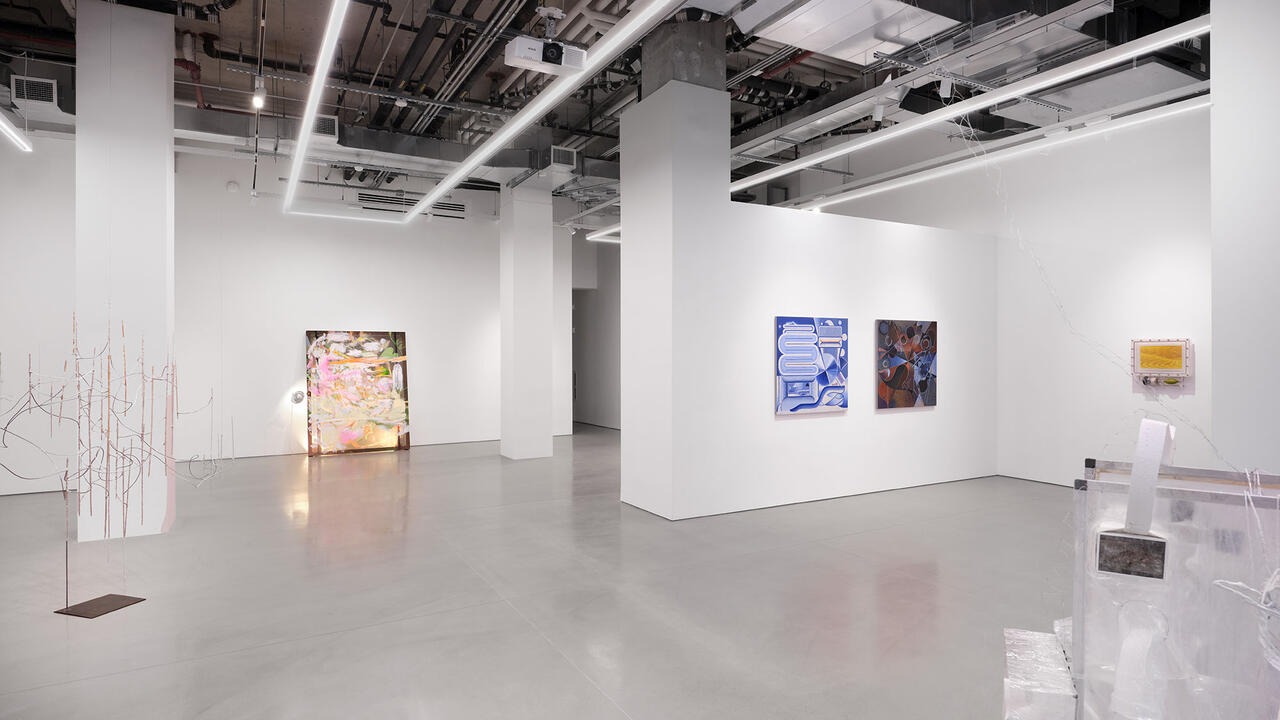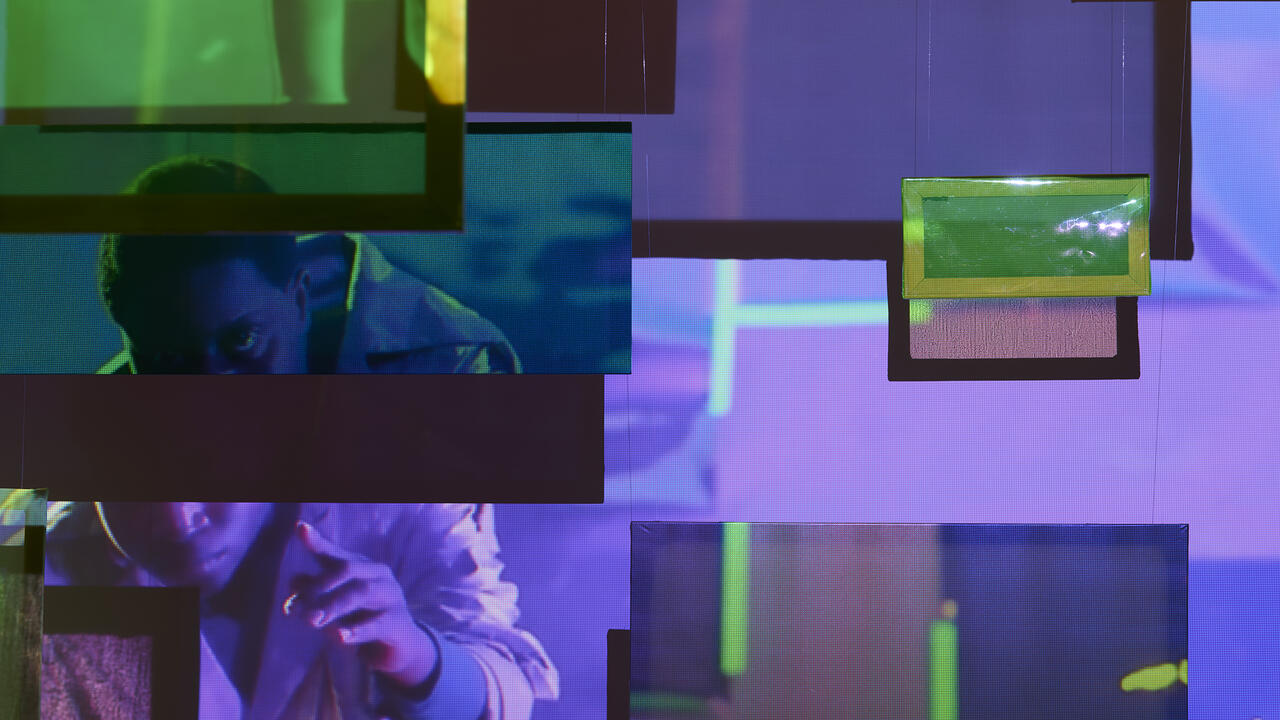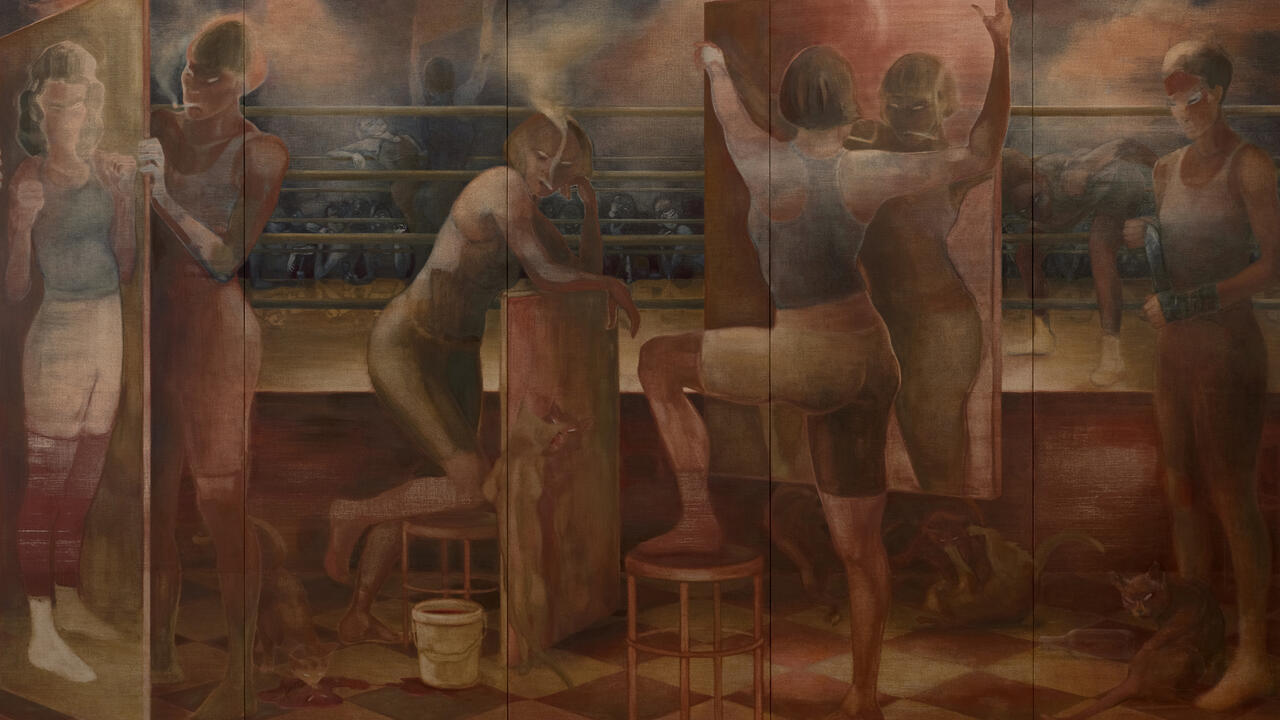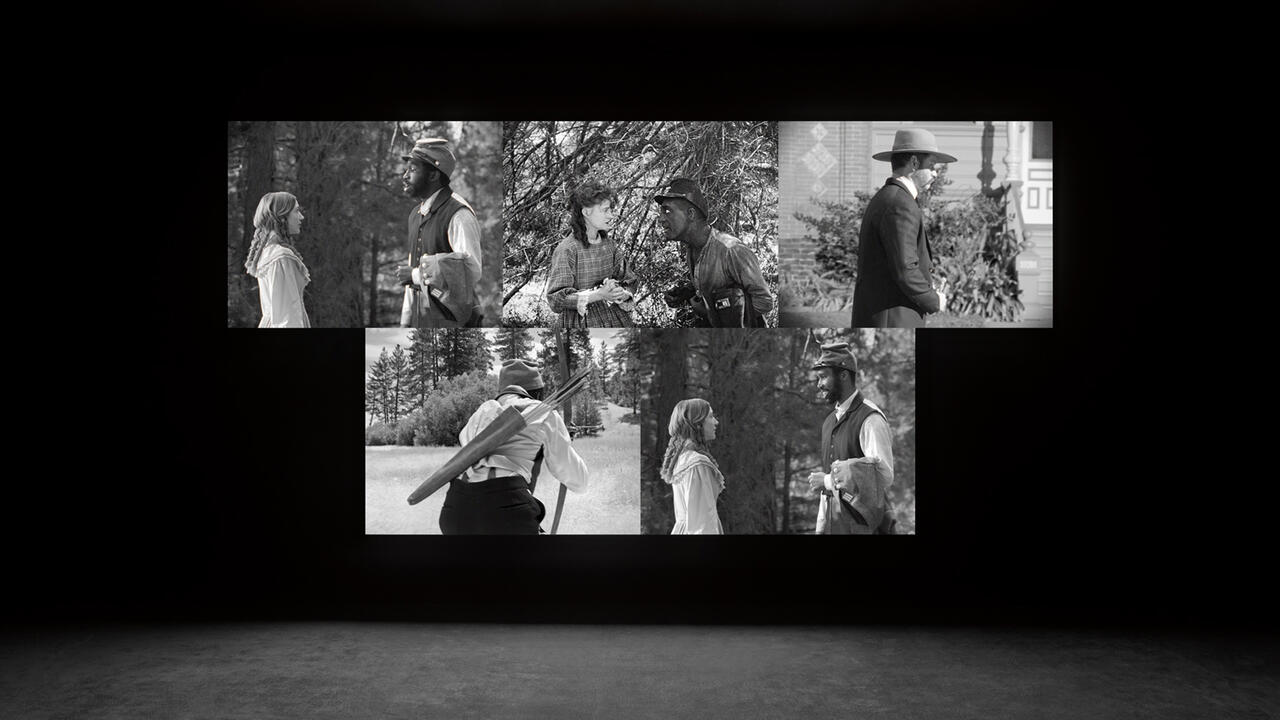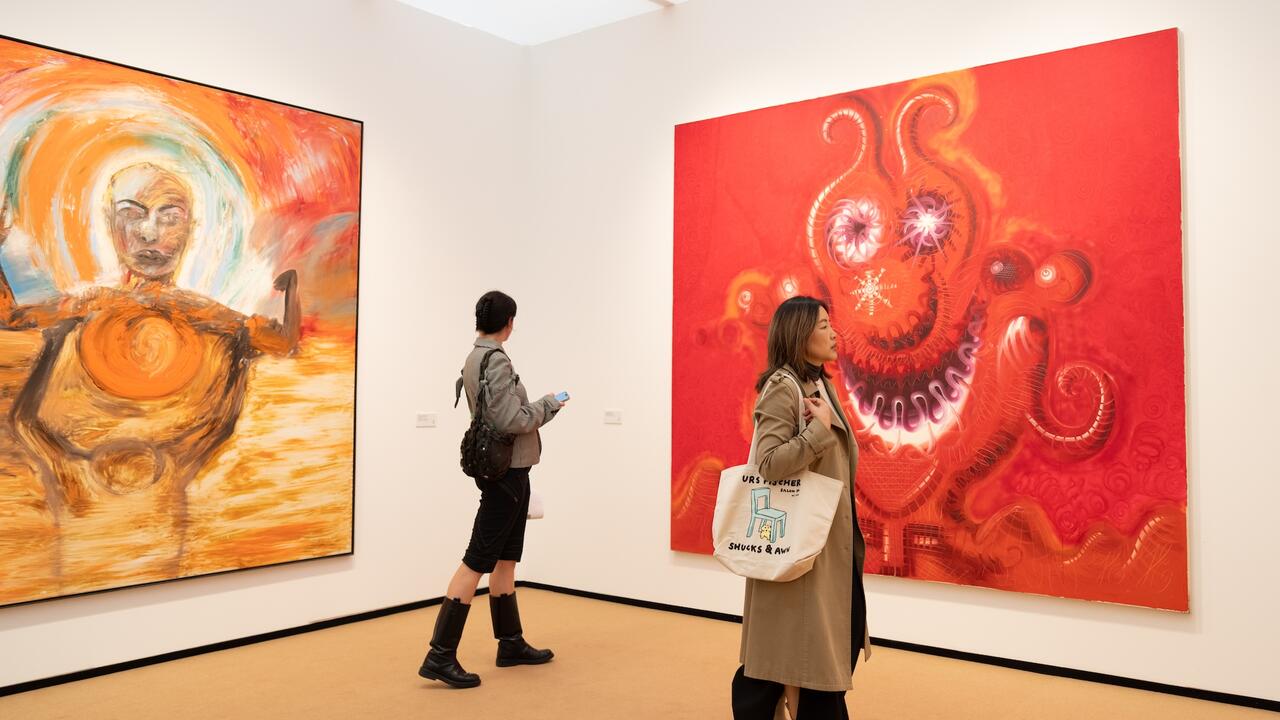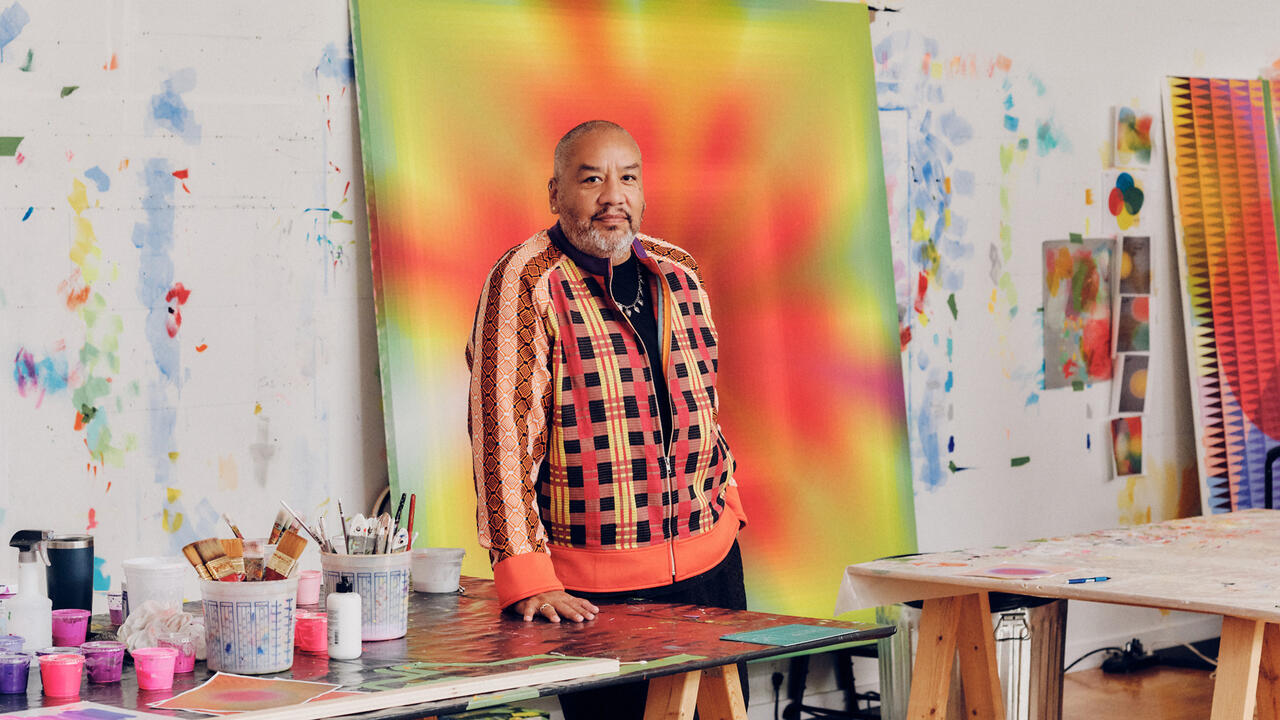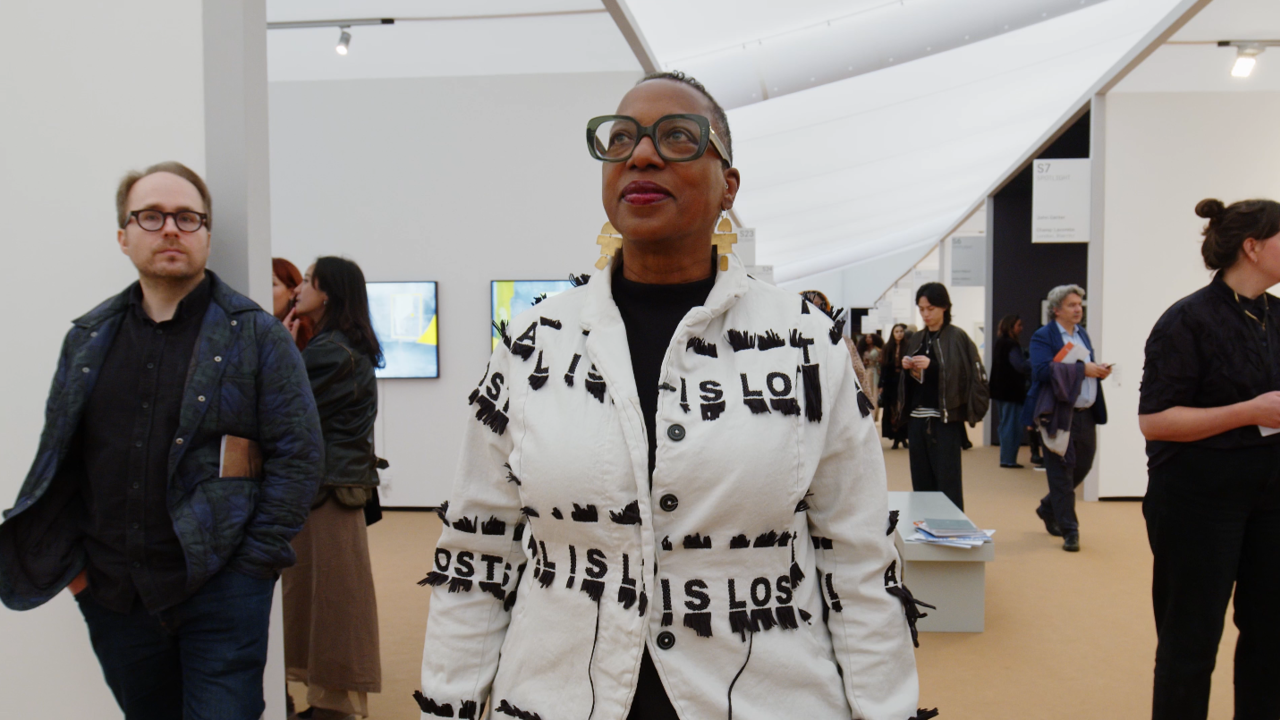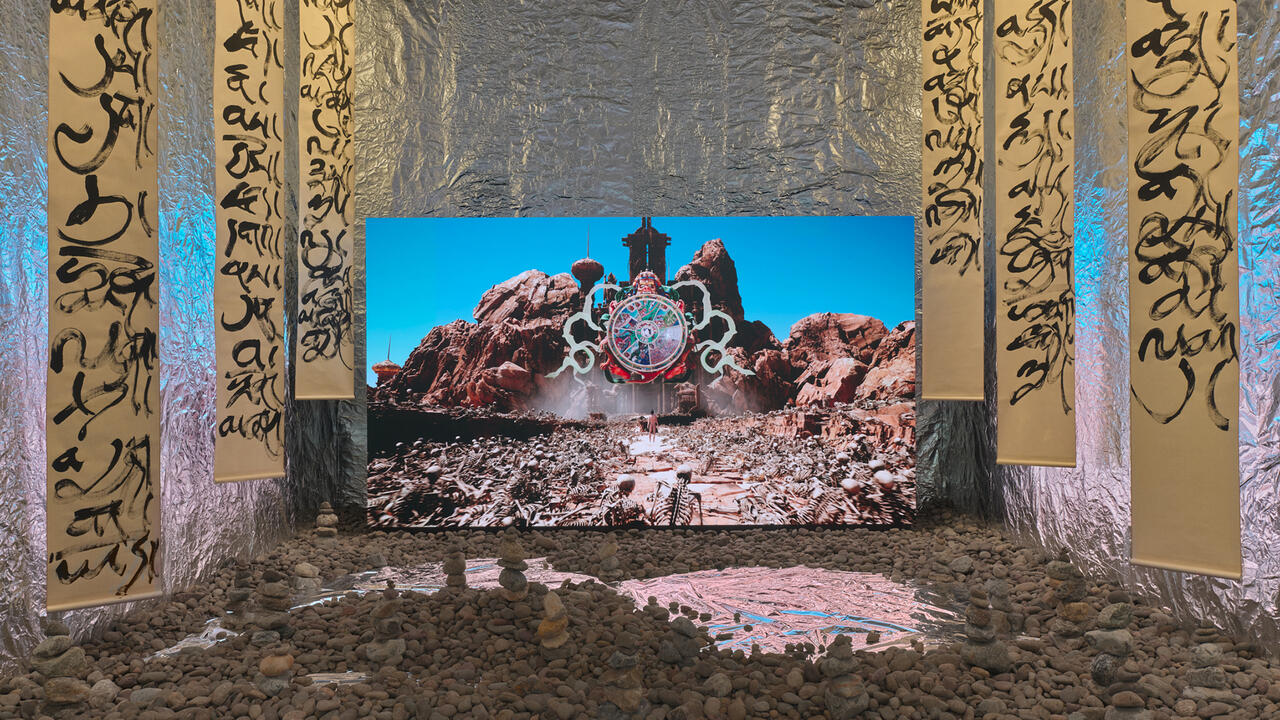Felix Gonzalez-Torres
Andrea Rosen Gallery, New York, Hauser & Wirth, London, and Massimo de Carlo, Milan
Andrea Rosen Gallery, New York, Hauser & Wirth, London, and Massimo de Carlo, Milan

To begin his 2006 essay on Felix Gonzalez-Torres, Robert Storr offers a vignette: at the Hirschhorn Museum in Washington D.C. in 1994, two young boys pick foil-wrapped sweets out of the artist’s “Untitled” (Placebo) (1991); an African-American guard explains to their mother that the quantity of sweets in the piece weighs the same as the bodies of the artist and Ross Laycock, his dead lover. Thus, Storr observes, within proximity of congressional debates on the homoerotic and ‘obscene’, and in the wake of tens of thousands of US deaths from AIDS (including Laycock’s), ‘a black civil servant and a prosperous looking white mother of two pre-adolescent males entered comfortably into a conversation centred on art and sex and death and public policy’.
How does this moment look, 22 years on? The participatory, hands-on, everyone’s-invited aspect of the piece feels now like a staple of institutional programming; the role of social interactions, particularly the intercession of the guard, seems to anticipate not just the first wave of relational aesthetics but also more recent developments in performance – most strikingly Tino Sehgal’s 2005 Venice Biennale presentation, This Is So Contemporary. Gonzalez-Torres’s dark, cagey, romantic sensibility suffused the air of recent exhibitions, such as 2015’s ‘Slip of the Tongue’, curated by Danh Vo at Punta della Dogana. Indeed, five years ago, Gonzalez-Torres’s work was deemed sufficiently substantial to provide the explicit conceptual structure for the entire Istanbul Biennial.

That Gonzalez-Torres’s practice retains a certain currency perhaps relates to the sense in which his social and historical moment mirrors our present one: in the 2016 of Donald Trump, post-Brexit ethnic violence, the Orlando shooting of Latino queers and trans bathroom bills, the conservative backlash of the 1990s feels prophetic, if not viciously familiar. Yet, Gonzalez-Torres’s tactic in the culture wars was less confrontation than stealth: the deployment of an inexplicit, deeply seductive abstraction that disarms and ensnares even the most hostile viewer. (‘He’s going to have a really hard time explaining to his constituency how pornographic and how homoerotic two clocks side by side are,’ the artist said of a Senator’s intended protest visit to the Hirschhorn survey.)
Earlier this year, I visited the new Met Breuer, whose inaugural exhibition included another candy piece from 1991, the multi-coloured “Untitled” (Portrait of Ross in L.A.). This work was included in 2010’s ‘Hide / Seek’ at the Smithsonian National Portrait Gallery (from which David Wojnarowicz’s A Fire in My Belly, 1986–87, was famously withdrawn). In the same room at the Met was a part of Zoe Leonard’s Strange Fruit (for David) (1992–97), citrus skins stitched together and allowed to decompose in memory of Wojnarowicz. Picking and unwrapping one of the components of Gonzalez-Torres’s pile, I realized for the first time how the practical engagement with the work so openly evokes the rustle of the pharmaceutical blister pack and, thereby, the endless and taxing regularity of the pill regimen which, at least for the people I know (which is to say those in the urban global North, with secure and stable access to advanced combination therapy), is central to the contemporary experience of living with HIV. In this way, where Leonard’s work felt like a memorial to and from a specific time, “Untitled” (Portrait of Ross in L.A.) might have been made yesterday.

It’s Just a Matter of Time, as the artist’s 1992 billboard piece enigmatically states. With chapters in New York, London and Milan, this year’s three-part survey of Gonzalez-Torres’s work – curated with extraordinary sensitivity by Julie Ault and Roni Horn (both close friends of the artist and, in Ault’s case, a collaborator via the collective Group Material) – is the first solo presentation of his work in a commercial gallery in over a decade; the London display is the first of any kind in the city since 2002.
At Andrea Rosen Gallery, the exhibition consists of four ‘portraits’ – text works comprising events and dates applied in lines of pale grey letters high on the gallery walls, like a string of celebratory bunting. This positioning requires you to crane and gaze, as though looking at a famous fresco, or a landmark from afar. Though often appraised in terms of the mingling of ‘public’ and ‘private’ histories, it is, in fact, the distance of biography that seems more to the point. It is hard to guess the meaning of ‘Porch Swing 1961’, for instance, or ‘hair 1979’ and, even when the referent is clear, it’s hard to say what significance ‘Bay of Pigs 1961’ might have had to Gonzalez-Torres or ‘Homestead Act 1862’ to Ault. The effect is not alienation, however, but, as Miwon Kwon puts it in a 2006 essay, a sense of ‘our connection and beholden-ness to another not only as indefinite strangers but because we are indefinite strangers’. The owner of each portrait, whether individual or institutional, has the right to amend the events included in the work at each presentation – an accompanying booklet catalogues each variation of the four on display. During installation, the musician Prince died and Ault added the words ‘Purple Unicorn’ to her ‘Untitled’ Portrait of Julie Ault (1991); in the accompanying booklet, already gone to print, the words had to be ink-stamped by hand.

Bereavement is omnipresent at Hauser & Wirth in London, where the show features only works made in 1991, the year of Laycock’s death. With its chronological focus, this chapter allows itself more variety of work. Facing the entrance is the blue mirror “Untitled” (Fear) (1991), installed at head height on a partition wall, its shade somewhere between sapphire and mouthwash. In the larger gallery behind, a range of images – some found, some personal, most without immediately recognizable subject or provenance – are reproduced on 26 jigsaw puzzles lining the walls in sealed plastic bags. Dispersion into pieces is promised but held at bay. Yet meaning is still elusive: letters are photographed in close-up so only cropped snatches of thoughts (‘my soul of life’; ‘am afraid that I have’; ‘strange music’) are legible: life consistently fails to fit within the frame or on the page.
The puzzles are interrupted by “Untitled” (March 5th) (1991), a pair of lightbulbs hanging limply in the same direction, just touching, their chords trailing to the floor, intimate and fragile. Opposite this, and behind the blue mirror facing the entrance, “Untitled” (Orpheus, Twice) (1991), comprises two standing panes, installed flush with the wall. In the Greek myth, Orpheus was permitted to bring his beloved back from Hades if he did not turn around to face her on the return journey. I thought I knew this piece well from installation views in books, but it was only standing in front of the work that I grasped that, whatever else it does, or means, the work renders the viewer Orpheus themselves, looking back at a vanished other. Though the floor of the gallery was empty, an axis of quiet energy seemed to pass from coupled lightbulbs to separating mirrors to the cold, solitary blue rectangle at the outset.

“Untitled” (Orpheus, Twice) appears again at Massimo de Carlo in Milan, alongside three bead-curtain works. The first of these, “Untitled” (Chemo) (1991), is installed in a doorway to the side of the gallery’s biggest display space, which has been left completely empty; the next covers the entrance to the office. The last, “Untitled” (Water) (1995), is installed across the width of the gallery’s upper room, some six or so metres, close to the room’s entrance, so you have to pass through it and look back to take in its cascading breadth. Looking at these works in books, you forget that their static visual majesty is only one aspect: the strings of beads also demand to be stroked and held, walked under, passed through. To do so provokes a heavy clatter – the piece is transformed. It is tempting to think of this passage as akin to Orpheus’s backwards glance: the irrevocable, entropic potential of a single gesture; the small, inscrutable and often unthinking actions that make up a life.
I expected these shows to be hugely moving, as they were. What I didn’t expect was how much I would learn from the works in the direct encounter with them. As such, the survey was not just a poignant tribute to Gonzalez-Torres, but a compelling case for the need to continue to actively engage his achievement: to carry on reaching out and unwrapping it, piece by piece.
Felix Gonzalez-Torres, Hauser & Wirth, London, runs 27 May – 30 July 2016.Lead image: Felix Gonzalez-Torres, Untitled, 1989, installation view, Andrea Rosen Gallery, New York, 2016. Courtesy: Andrea Rosen Gallery, New York © The Felix Gonzalez-Torres Foundation.


